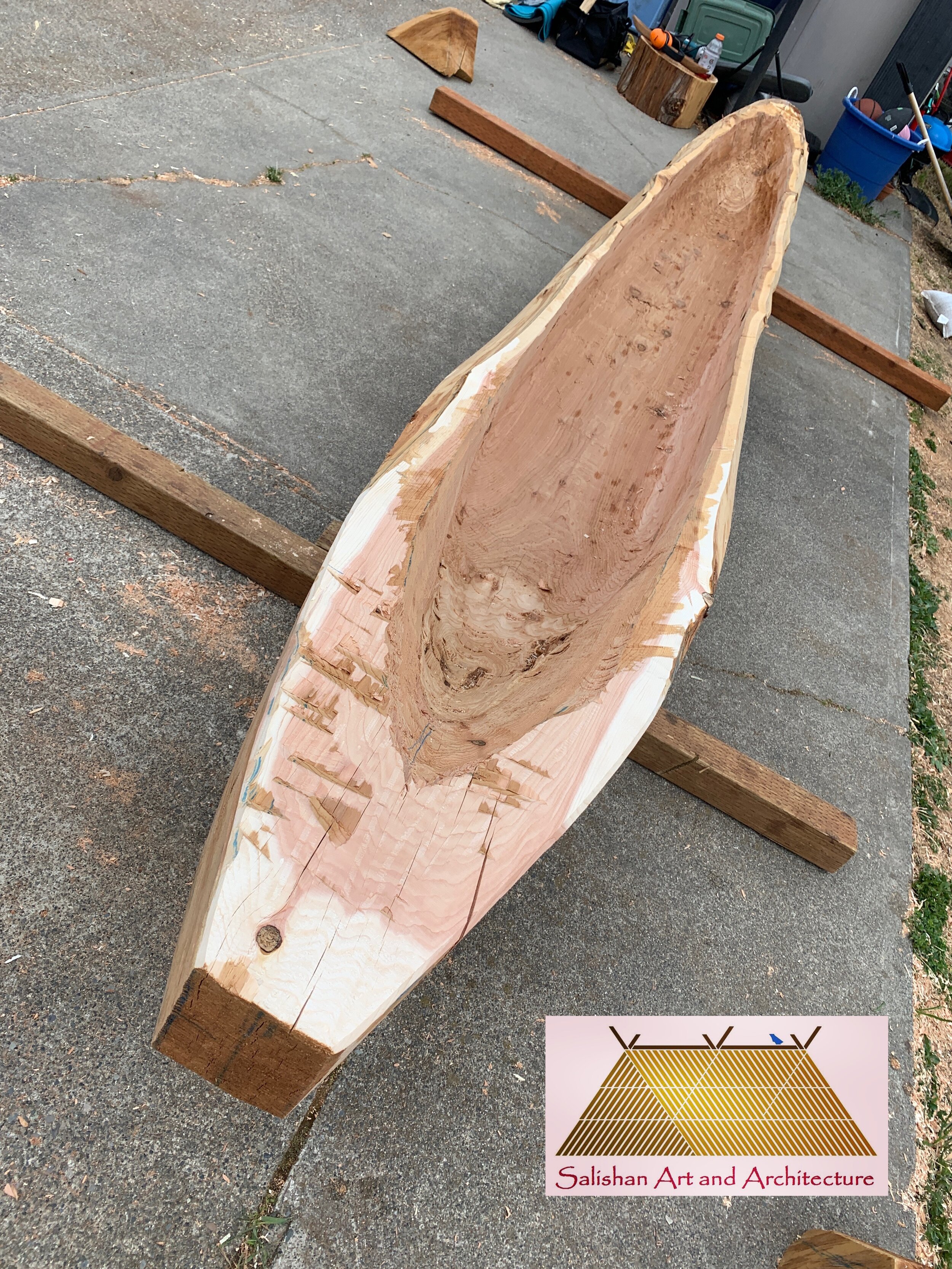Salishan Art and Architecture (Est. 2005) began carving a volunteer cedar dugout canoe during the Covid-19 stay at home orders in March 2020. Personally, chose the stump end of the cedar log for the bow (front) of the canoe so that the canoe would be balanced when solo paddled from the stern (rear). Otherwise the canoe would be popping wheelies on the water. Then triangulated this functional decision to multiple sources by speaking with Plateau knowledge holders and elders, historical photo analysis, as well as a thorough research literature review of northwest canoes:
For example, Olsen (1936) stated “The butt end of the log was always used for the bow of the canoe for the reason that the wood of that portion has a higher specific gravity. When only one [person] is in the canoe it manages much more easily if the bow is relatively heavy. The canoe swings less easily with each stroke of the paddle than if the bow is light and rises out of the water(pg. 69).”
“River canoes were stout and sturdy, with thick bottoms which would not soon wear through or split when being poled or dragged over gravelly beds (pg. 67-68).”
“...effects of the sun frequently caused the canoes to crack...They were commonly covered with [tule] mats to protect them from the suns rays (pg. 70).”
Media Links:
Video: Carving a Canoe from a Single Cedar Tree
Video: Spokane Public School student with ties to Spokane Tribe building canoe











